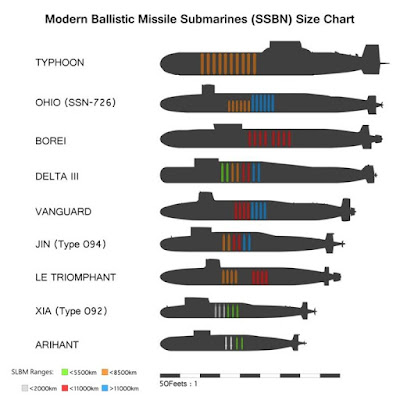Reading the article below the Brexit leave European Union (EU) result (June 23/24, 2016) will likely have worse and more widespread effects on UK and European defence than I first thought:
- the sharp drop in value of the UK Pound (of about 10% in 4 days compared to the US dollar) has increased the price of key weapons the UK is/was going to buy from the US including:
= the overdue-still-under-development, overpriced, F-35B strike fighter the UK was specifically
building its two carriers around (big mistake!), and
= the P8A Poseidon ASW MPA the UK desperatly needs to sanitise seaspace for its subs.
The lower UK revenue base once/if Scotland breaks from Britain (in order for Scotland to remain in the EU) also needs to be factored in. This means a lower Defence Budget for Britain, no matter if the Pound recovers.
ARTICLE
The UK’s Evening Standard, June 27, 2016 reports:
EU referendum: Defence spending cuts expected in wake of Brexit voteBY ROBERT FOX
Defence spending and planning is now expected to come under severe pressure as a result of the Brexit vote, with a growing possibility of cuts and a new review once a new government is installed in the autumn.
Defence and security featured episodically in the Brexit debate, mostly in issues such as an EU European army and the need for more security forces for stopping illegal migrant trafficking.
Now the slide of the pound against the dollar will mean a number of big defence programmes will have to be scrutinised. “Considering that about 40 per cent of the big defence programmes are tied to the dollar, they are going to have to think hard,” says the pre-eminent independent analyst Francis Tusa.
Major aircraft programmes like the Lockheed Martin F-35 Lightning II for the aircraft carriers and plans for the upgrade and replacement of the Trident nuclear deterrent system will be under examination.
This week the government is due to sign the contract to purchase nine P8 Poseidon torpedo-carrying maritime patrol aircraft from Boeing in the United States.
“With the slide in the pound, the whole package could now cost in the region of £4 billion,” says Tusa, publisher and editor of the renowned independent Defence Analysis review. “That is really very expensive – particularly as there will be very little UK employment involved.”
The P8 is to plug the gap after the cancellation of the Nimrod maritime patrol aircraft programme in David Cameron’s first defence review of October 2010. Recently French, Dutch and other allied aircraft have had to be called in to track Russian submarines round British coasts – because of the capability gap left by the absence of the RAF’s Nimrods. The MoD took the unusual course of placing the order directly with Boeing, without running a full competition. Cheaper alternatives are available to the P8 such as [less capable for ASW work] Airbus C295 turboprop, which is partly British built.
Even before Brexit there was a growing belief that the defence budget -- at roughly £34 billion a year -- was overstretched, and would need revising. Large naval building programmes such as the two aircraft carriers now being completed at Rosyth and the requirement for a new frigate, the Type 26, currently costed at £650 million each, are coming under pressure – the initial plan for 13 of the new frigates has now been cut to eight.
This autumn [Sept-Nov 2016] the government was due to sign initial contracts for the main building phase for the four large submarines and new warhead for the Trident nuclear ballistic missile programme. This has now been blown off course by Brexit and may not take place till next year as Trident renewal will have to be debated and approved by parliament.
Crispin Blunt, chairman of the influential Foreign Affairs Committee of the House of Commons recently published his estimate that the Trident renewal programme could cost £182 billion at today’s prices for a 32 year programme beginning in 2028– the date the present Vanguard nuclear submarines are due out of service.
“At that price, I think it’s pretty unaffordable,” Blunt has said.
FURTHER COMMENT
Returning to subs - The UK's need replacement of 4 Tridents missile submarines (launched between 1992 - 1998) may become particularly unaffordable because there will be many smaller more immediate weapons, and defence base costs, to be paid first.
A major issue is "How long is the real service life of Britain's Trident subs?" An initial 30 year assumption has turned into 40+ years for the USN and French Navy.
Still, if the UK with a lower Defence Budget has to go to the expense of relocating/rebuilding the Faslane nuclear submarine base elsewhere in the UK this may kill off the already expensive/unpopular Trident sub program.
All this means (for submarine advocates) is that the governing UK Conservative Party needs to be very careful to schedule the decision date (on whether or not to build the new Trident submarines) to a time such a decision can be a positive yes.
A “silver lining”, in these days of Brexit shock, is that it has destabilised the leadership of the leftist/pacifist Labour Leader Jeremy Corbyn, who, of course, opposes Trident. Corbyn may soon be replaced by more mainstream Labour leader, who is sympathetic to the UK shipbuilding unions who favour building 4 new Trident subs.
This BBC article of June 30, 2014 indicates where the UK Trident SSBN are located (at Faslane, north of Glasgow, Scotland). Alternatives in the UK, France and the US (marked in green) all involve great cost and major political downsides. I'll put a copy of the BBC article on Submarine Matters on July 1, 2016 before the July 2, Australian Election results come out. ---
Pete





















